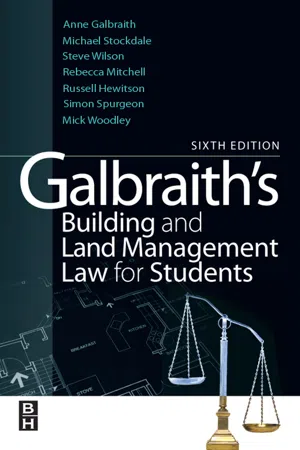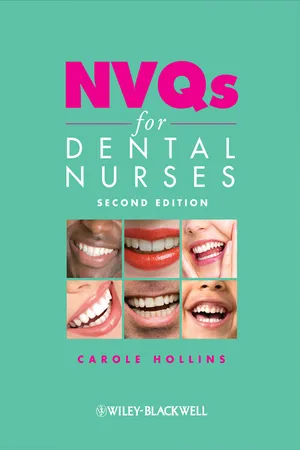COSHH
COSHH stands for Control of Substances Hazardous to Health. It is a set of regulations designed to protect people from health risks associated with hazardous substances in the workplace. COSHH requires employers to assess and control the risks from hazardous substances and provide information, instruction, and training to employees who may be exposed to such substances.
4 Key excerpts on "COSHH"
- eBook - ePub
- Ceri Davies(Author)
- 2020(Publication Date)
- Wiley-Blackwell(Publisher)
...53 Control of Substances Hazardous to Health (COSHH) The Control of Substances Hazardous to Health (COSHH) Regulations 2002 set out requirements that employers have to abide by to ensure protection of their employees and other people. This includes protection from hazards relating to substances used at work by means of risk assessment, control of exposure, health surveillance, and incident planning. Employees also have the duty to protect themselves and take care of their own exposure to hazardous substances. Following COSHH guidance is a legal requirement. All employers must have written risk assessments that identify all substances and chemicals, listing: The substance. Who may be harmed. How they may be harmed. The level of risk. The controls in place. All staff are required to read and sign the assessment and it must be updated regularly....
- Michael Stockdale, Rebecca Mitchell, Stephen Wilson, Simon Spurgeon, Russell Hewitson, Mick Woodley(Authors)
- 2010(Publication Date)
- Routledge(Publisher)
...Substances are defined as ‘any natural or artificial substance whether solid, liquid, gas or vapour’. Harm may be caused by inhaling the substance, or ingesting or absorbing it. Employers are required to assess the risk presented by the substances, both to employees and others. They must prevent or control exposure to substances, and monitor it, and carry out health surveillance of employees exposed to risk. The regulations impose obligations on employers in regard to training and information for employees. According to the HSE ‘an estimated 1.3 million businesses in Great Britain are engaged in activities that involve the use or production of substances hazardous to health’. These businesses are thus subject to the COSHH Regulations 2002 and the subsequent amendments. COSHH does not apply to asbestos or lead, which have their own regulations. Employers may even be liable under COSHH when they have provided protective equipment such as latex gloves where those gloves themselves cause a harmful reaction to an employee. In Dugmore v. Swansea NHS Trust the Court of Appeal held that employers are subject to an absolute duty which requires them to seek out risks and prevent them. There was no reason to limit liability to situations where a risk was reasonably foreseeable or could only have been revealed by a risk assessment. In June 2007, a European Union regulation operating alongside COSHH came into force. REACH concerns the Registration, Evaluation, Authorization and restriction of CHemicals. Its aims include the provision of a high level of protection of human health and the environment from the use of chemicals and the imposition of responsibility on manufacturers and importers of chemicals such that they understand and manage the risks associated with their use. A system of registration of relevant information applies. The Factories Act 1961 The main body of this Act has been replaced by the Health and Safety at Work etc...
- eBook - ePub
Principles of Occupational Health and Hygiene
An introduction
- Sue Reed, Dino Pisaniello, Geza Benke, Kerrie Burton(Authors)
- 2020(Publication Date)
- Routledge(Publisher)
...2003, ‘Hazardous substances compliance and understanding in small enterprises’, Proceedings of Annual Conference of Australian Institute of Occupational Hygienists, Adelaide, AIOH, Melbourne, pp. 456–69 Health and Safety Executive (HSE) 1999, Control of Substances Hazardous to Health—easy steps to control chemicals, HSE, Sudbury, UK —— 2009, The Technical Basis for COSHH Essentials: Easy steps to control chemicals, HSE, Sudbury, UK, <www.COSHH-essentials.org.uk/assets/live/CETB.pdf> [4 November 2012] —— n.d. COSHH Essentials, HSE, Sudbury, UK, <www.hse.gov.uk/COSHH/essentials/index.htm> [4 November 2012] Safe Work Australia 2011a, Model Work Health and Safety Regulations: November 2011, SWA, Canberra, <www.safeworkaustralia.gov.au/sites/swa/legislation/administrativeregulations/pages/model%20work%20health%20and%20safety%20regulations.aspx> [11 November 2012] —— 2011b, Workplace Exposure Standards for Airborne Contaminants, SWA, Canberra, <www.safeworkaustralia.gov.au/sites/SWA/AboutSafeWorkAustralia/WhatWeDo/Publications/Documents/639/Workplace_Exposure_Standards_for_Airborne_Contaminants.pdf> [11 November 2012] —— 2012, Hazardous Substances Information System—Exposure Standard Documentation: carbon monoxide, SWA, Canberra, <http://hsis.safeworkaustralia.gov.au/ExposureStandards/Document?exposureStandardID=111> [11 November 2012] Standards Australia 2009, AS 2865:2009, Confined Spaces, Standards Australia, Sydney Topping, M., Williams, C.R. and Devine, J.M. 1998, ‘Industry’s perceptions and the use of occupational exposure limits’, Annals of Occupational Hygiene, vol. 42, no. 6, pp. 357–66 Zalk, D.M. 2010, Control Banding—a simplified qualitative strategy for the assessment of occupational risks and selection of solutions, US Department of Energy, Washington, DC...
- eBook - ePub
- Carole Hollins(Author)
- 2013(Publication Date)
- Wiley-Blackwell(Publisher)
...So, they may be classed as ‘toxic’, ‘harmful’, ‘corrosive’ or ‘irritant’ (Figure 2.6). Figure 2.6 COSHH hazard signs. Source: Levison’s Textbook for Dental Nurses, 10th edn, C. Hollins, 2008, Wiley-Blackwell. These symbols will appear on the substance packaging, along with information on the actions to take in the event of an accident; all of this information will be included in the COSHH report of each substance. Other hazardous substances found specifically in the dental workplace are: Ionising radiation – as it has a maximum exposure limit Micro-organisms – present on all items and equipment contaminated by the body fluids of patients The COSHH assessment will follow the stages set out below for each of the substances: (1) Identify those substances which are hazardous, by reading the manufacturers’ leaflets, which should accompany the product (2) Identify who may be harmed – usually all persons using the substance Identify how they may be harmed – breathing in, irritant to eyes or skin, etc. (3) Evaluate the risk of the substance (4) Determine whether health monitoring is required (mercury exposure, for example) (5) Control the risks, or reduce them as far as possible (6) Inform all staff of the risks (show sheets and sign to say they have read and understood them) (7) Record the assessment and review and update it. regularly Each substance will have the relevant details entered onto an evaluation sheet, set out in the same way for ease of reference (Figure 2.7). The evaluation sheets for all substances used in the workplace should be kept in several folders throughout the premises, for ease of access by all staff...



